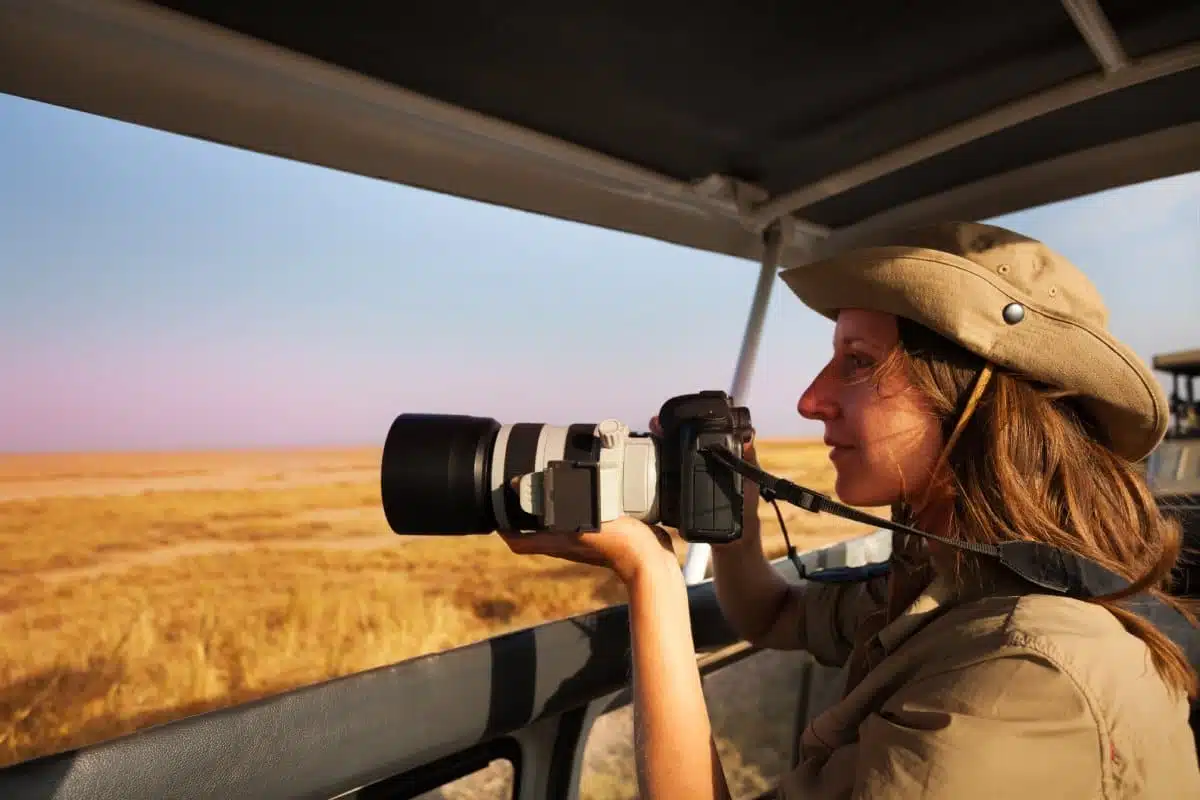The Serengeti, a name that conjures images of vast plains, thundering herds, and the quintessence of wild Africa, is one of the most celebrated wilderness areas in the world. This iconic destination in Tanzania is renowned for its diverse and abundant wildlife, sprawling landscapes, and the annual Great Migration, a spectacle of life and survival. This guide explores the heart of the Serengeti, exploring the myriad experiences it offers to the wildlife enthusiast and the casual observer alike.
1. The Great Migration
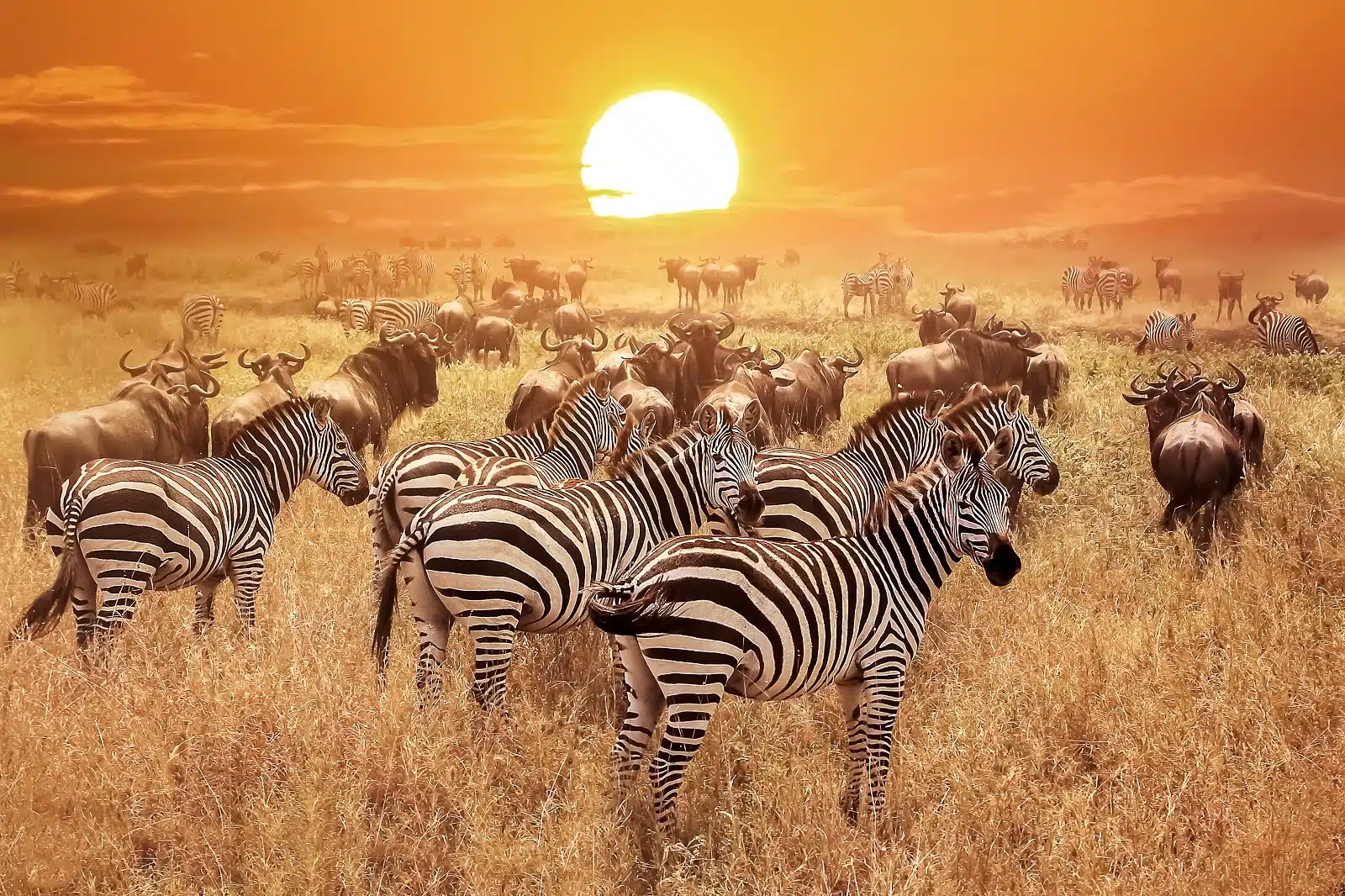
Image Credit: Shutterstock / Delbars
The Great Migration is a massive journey across the Serengeti-Mara ecosystem, an annual loop of over 1.5 million wildebeest, accompanied by hundreds of thousands of zebras and gazelles. This mass movement is driven by the primal urge to find fresh grazing and water, with the herds following the rains in a clockwise fashion. Witnessing the great migration offers a glimpse into the raw essence of nature, from the birthing season in the southern Serengeti, where the plains come alive with newborns, to the perilous river crossings in the north, where predators lurk in the shadows. The migration is about the movement of animals and the cycle of life and death it represents. Predators, including lions, crocodiles, and hyenas, are never far behind the herds, and the struggle for survival is palpable. This event, arguably the greatest wildlife show on earth, encapsulates the unforgiving yet majestic nature of the wild, offering observers a profound sense of awe and a deeper appreciation for the complexities of the natural world.
Insider’s Tip: For the best view of the river crossings, stay in a mobile camp that moves with the migration. Booking well in advance is crucial, as these spots fill up quickly.
When to Travel: The migration is a year-round event, but to witness the Mara River crossing, plan to visit between July and September.
How to Get There: The Serengeti is accessible via flights from Kilimanjaro International Airport to local airstrips, followed by a drive into the park.
2. Predators of the Serengeti
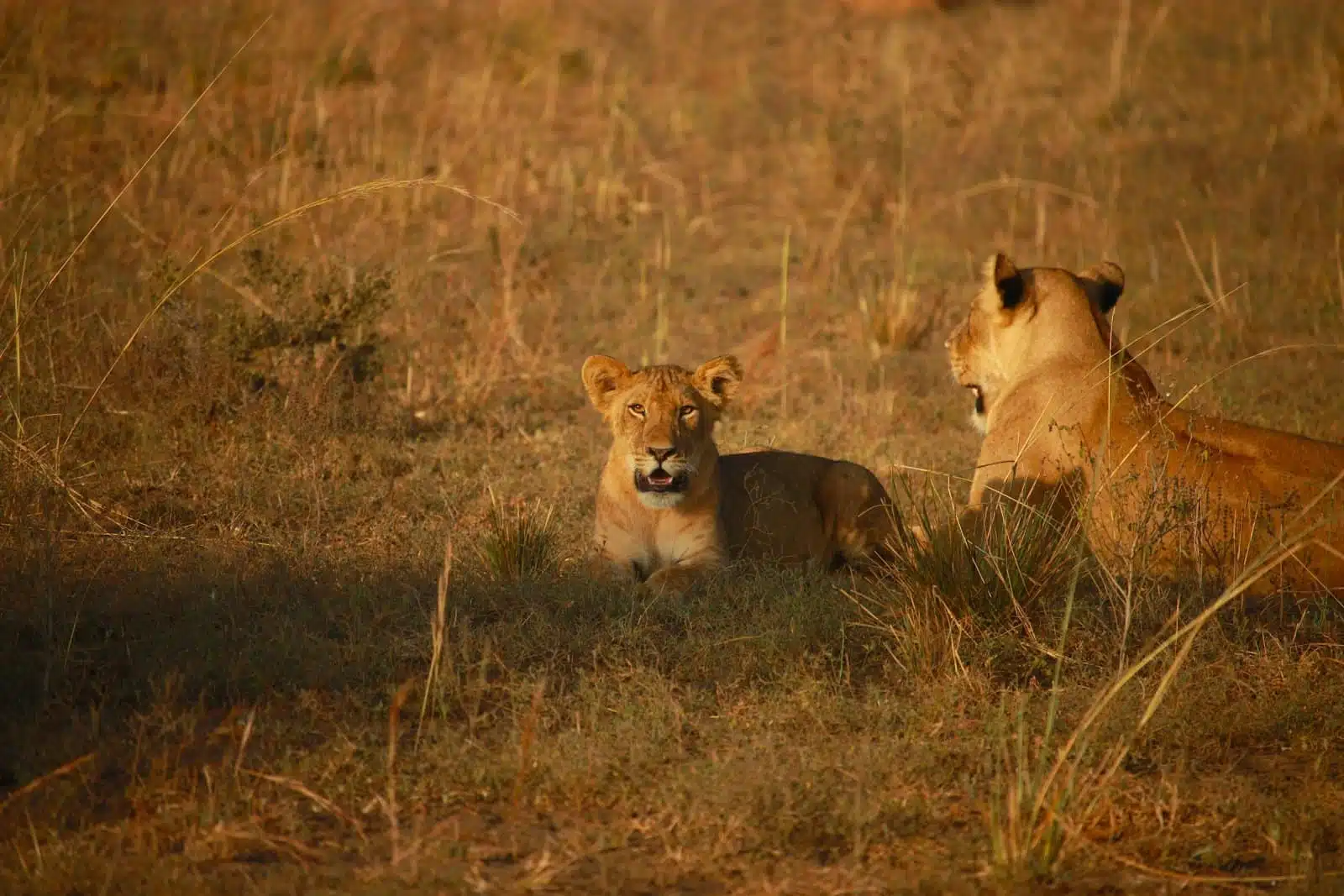
Image Credit: Pexels / Filip Olsok
The predators of the Serengeti are as much a part of the landscape as the endless plains. This region is home to one of the densest populations of lions in the world, along with significant numbers of cheetahs, leopards, and hyenas, making it an unparalleled destination for those hoping to witness the drama of predator-prey interactions. The sight of a pride of lions lounging in the shade or a solitary leopard draped over the branch of an acacia tree is emblematic of the Serengeti’s untamed beauty. Cheetahs can often be seen scanning the horizon for prey or in a breathtaking sprint to capture a meal. Meanwhile, clans of hyenas provide a glimpse into the complex social structures of Serengeti’s carnivores. Observing these predators in their natural habitat, and engaging in the daily struggle for survival is a powerful reminder of nature’s raw beauty and brutality. Each sighting is a story, a snapshot of life in one of the world’s most vibrant ecosystems, offering an unforgettable experience that resonates with the primal wild.
Insider’s Tip: Join a guided safari with experienced trackers who know the behaviors and territories of these predators to increase your chances of a memorable sighting.
When to Travel: Dry season months from June to October offer the best opportunities for predator sightings as animals congregate around water sources.
How to Get There: Fly into Seronera Airstrip for central access to the Serengeti, where predator sightings are frequent.
3. Birdwatching in the Serengeti
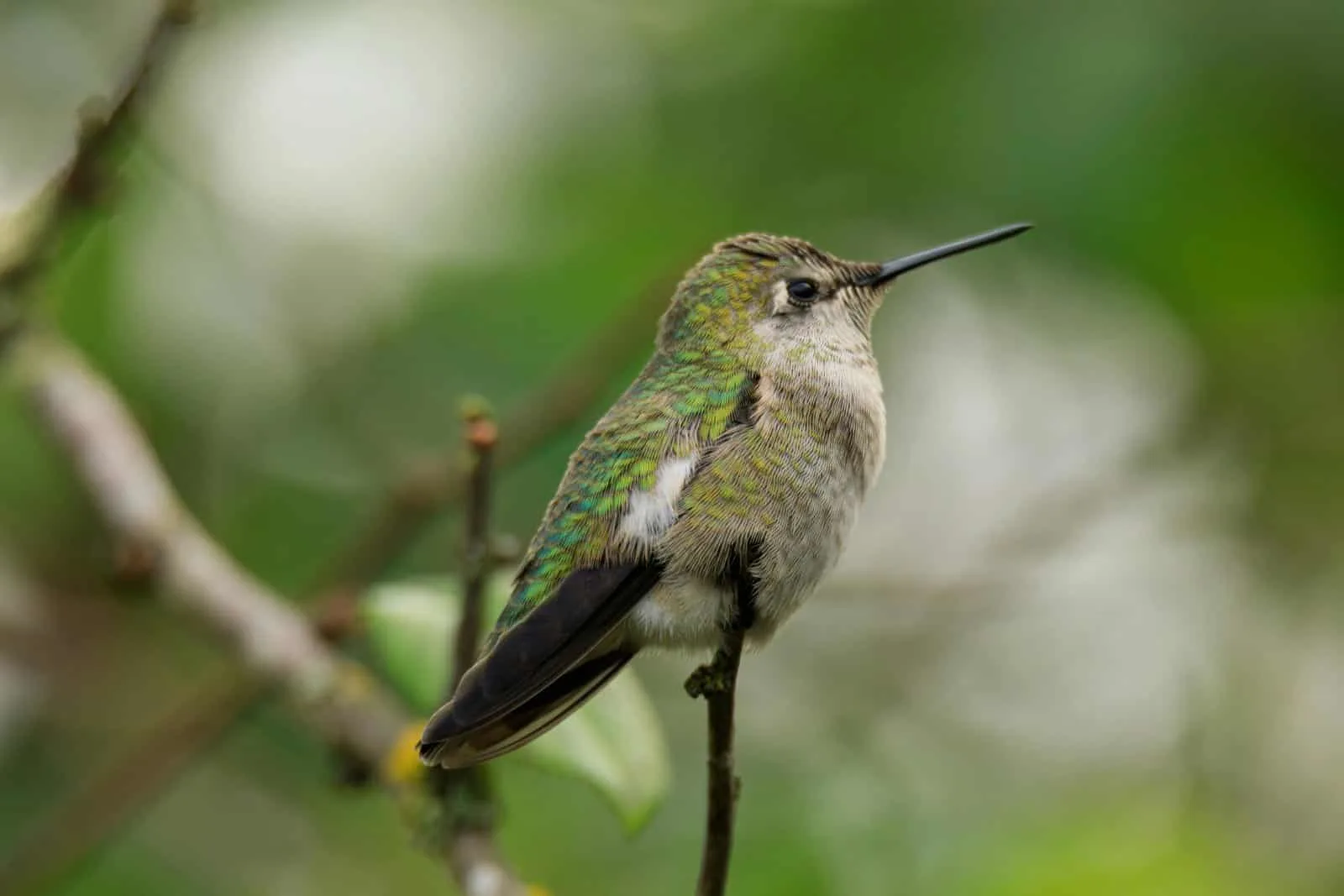
Image Credit: Pexels / MICHAEL MCGARRY
Birdwatching in the Serengeti outdoes the typical wildlife experience, offering a serene yet vibrant exploration of one of the most biodiverse regions on the planet. With over 500 species recorded, the park’s avian life ranges from the grandeur of large raptors like the martial eagle to the delicate beauty of sunbirds and bee-eaters. The Serengeti’s varied ecosystems — open savannahs, acacia woodlands, and riverine forests — provide habitats for both resident and migratory species, making every birdwatching expedition a unique discovery. Specialized tours led by expert guides enhance this experience, offering insights into bird behaviors, nesting habits, and the best times and places for sightings. This activity appeals to avid birders and those who appreciate the quieter, more nuanced interactions within the natural world. The flutter of a lilac-breasted roller taking flight or the haunting call of a fish eagle becomes a memorable part of the Serengeti and celebration of the park’s ecological richness.
Insider’s Tip: Bring a high-quality pair of binoculars and a field guide to East African birds to enhance your birdwatching experience.
When to Travel: From November to April, the wet season is the best time for birdwatching, as many species are in breeding plumage and migratory birds are present.
How to Get There: Access the Serengeti via the Ndabaka Gate for the Western Corridor, where birdlife is abundant, especially near the Grumeti River.
4. Serengeti Balloon Safaris

Image Credit: Pexels / Antony Trivet
Experiencing the Serengeti from a hot air balloon basket offers an unrivaled perspective on this ancient landscape. As the sun rises, painting the sky in soft pastels, the vastness of the plains stretches below, teeming with wildlife. This serene journey at dawn allows for observing the Serengeti’s diverse habitats and inhabitants from a unique vantage point. The balloon’s path, dictated by the morning breezes, offers a silent and majestic overview of herds moving across the savannah, the winding rivers that sustain the ecosystem, and the isolated beauty of the kopjes. This experience, culminating in a champagne breakfast in the bush, is not just a safari but a moment of connection with the timeless beauty of the African wilderness. It’s an opportunity to witness the Serengeti’s rhythms in the soft morning light. This memory lingers long after the journey ends.
Insider’s Tip: Book your balloon safari well in advance, as spaces are limited and demand is high, especially during the migration season.
When to Travel: Balloon safaris are available year-round, but the dry season offers more predictable weather conditions for flights.
How to Get There: Most balloon safaris depart from central Serengeti near Seronera, easily reached by road or air from major Tanzanian cities.
5. Ngorongoro Crater Conservation Area
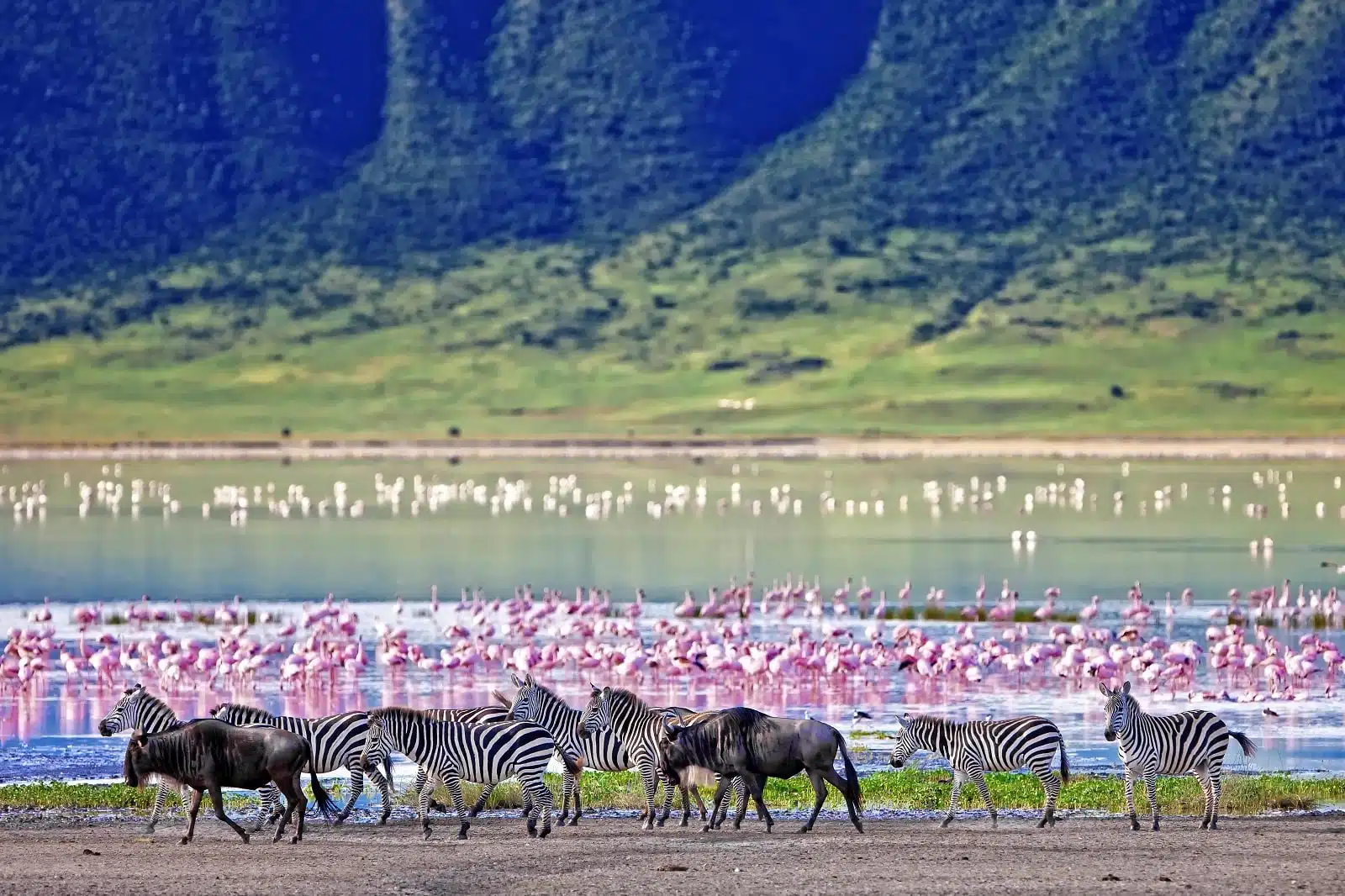
Image Credit: Shutterstock / Travel Stock
The Ngorongoro Crater, often described as a microcosm of the African safari experience, offers an unparalleled concentration of wildlife within its towering walls. This conservation area, adjacent to the Serengeti, showcases the harmonious coexistence of humans and wildlife, with the Maasai people grazing their livestock alongside wild animals. The crater floor, a haven for wildlife, provides almost guaranteed sightings of the Big Five in their natural habitat. The unique ecosystem supports a vast array of species, from the densest population of lions in the world to critically endangered black rhinos. The Ngorongoro Crater is certainly a destination for wildlife viewing; it’s a geological wonder, a site of significant archaeological interest, and a conservation success story. Visitors are treated to breathtaking landscapes, from the verdant, rain-fed forests that cloak the crater’s rim to the soda lake that attracts a flamboyance of flamingos. This natural amphitheater offers an intimate and expansive safari experience, reflecting the beauty and complexity of the African wilderness.
Insider’s Tip: Stay on the crater rim for breathtaking views and easy access to the crater floor at dawn, which is the best time to observe wildlife before the day gets too hot.
When to Travel: The dry season from June to October is ideal for wildlife viewing, as animals are more likely to be found near water sources.
How to Get There: The Ngorongoro Conservation Area is about a 3-hour drive from Arusha, which has an airport serving domestic flights from major Tanzanian cities.
6. Kopjes of the Serengeti
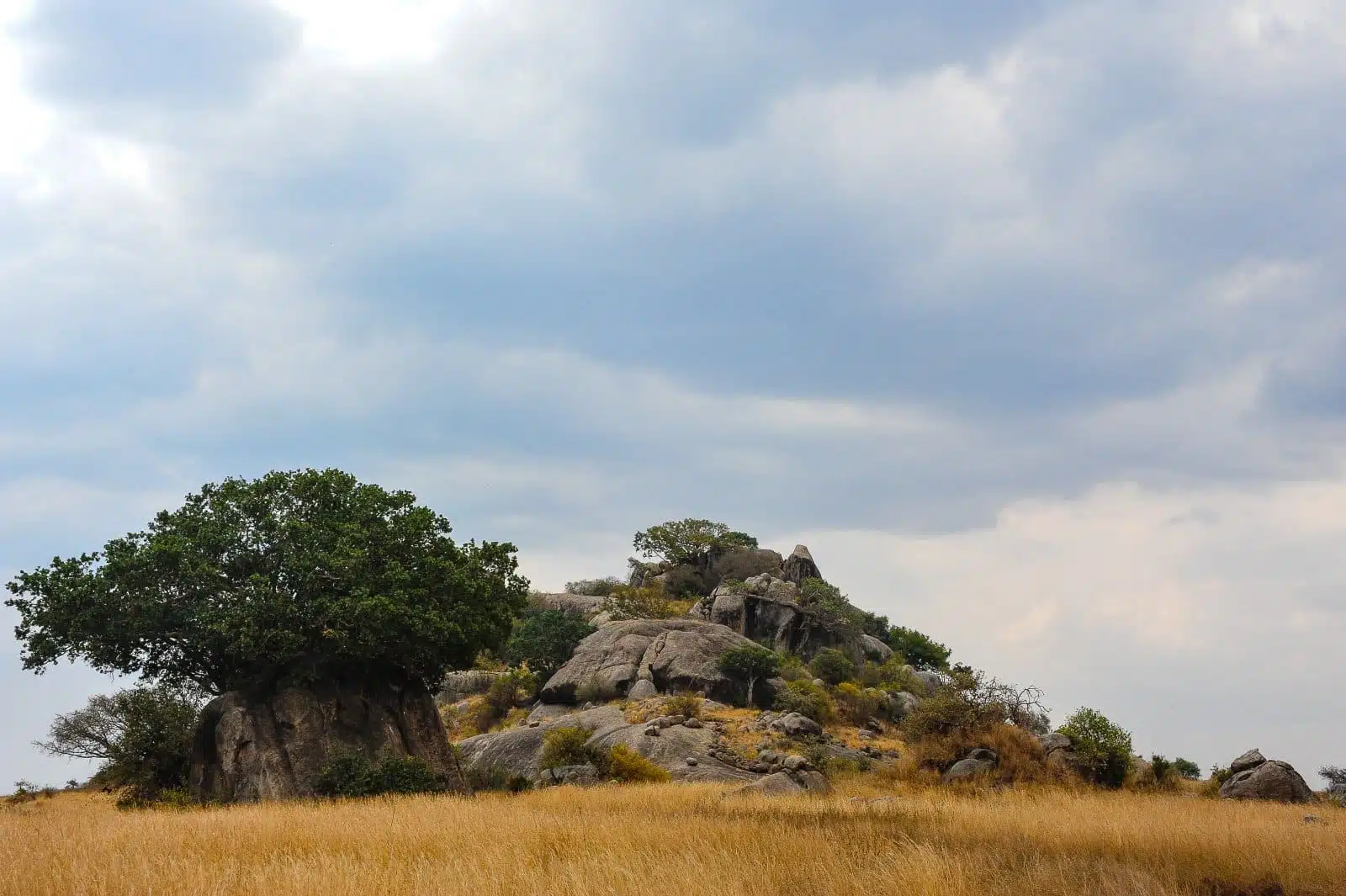
Image Credit: Shutterstock / Linda_K
Kopjes, the Serengeti’s iconic granite rock formations, emerge from the plains like islands in a sea of grass, offering a unique ecosystem that contrasts with the surrounding savannah. These ancient rocks, weathered by time, provide shelter and habitat for various species. Predators such as lions and leopards use kopjes as vantage points to scout for prey, while cheetahs might use the secluded spaces for resting or as a hideout for their cubs. The crevices and caves within these formations offer refuge to smaller creatures and a diverse range of flora, some unique to these microenvironments. Exploring the kopjes allows visitors to observe these intimate wildlife interactions up close. With its boulders and outcrops, the dramatic landscape also presents unparalleled photographic opportunities, especially in the golden light of dawn or dusk. The Serengeti’s kopjes are not just geological wonders; they are vital components of the ecosystem, supporting life in myriad forms and adding to the park’s biodiversity.
Insider’s Tip: Visit the Simba Kopje, which inspired Pride Rock in “The Lion King,” for its resident lion pride and iconic Serengeti vistas.
When to Travel: Wildlife viewing around the kopjes is excellent year-round, but visibility is best during the dry season when the grass is shorter.
How to Get There: Kopjes are scattered throughout the Serengeti, with many accessible by vehicle from Seronera in the central Serengeti.
7. Maasai Cultural Experiences
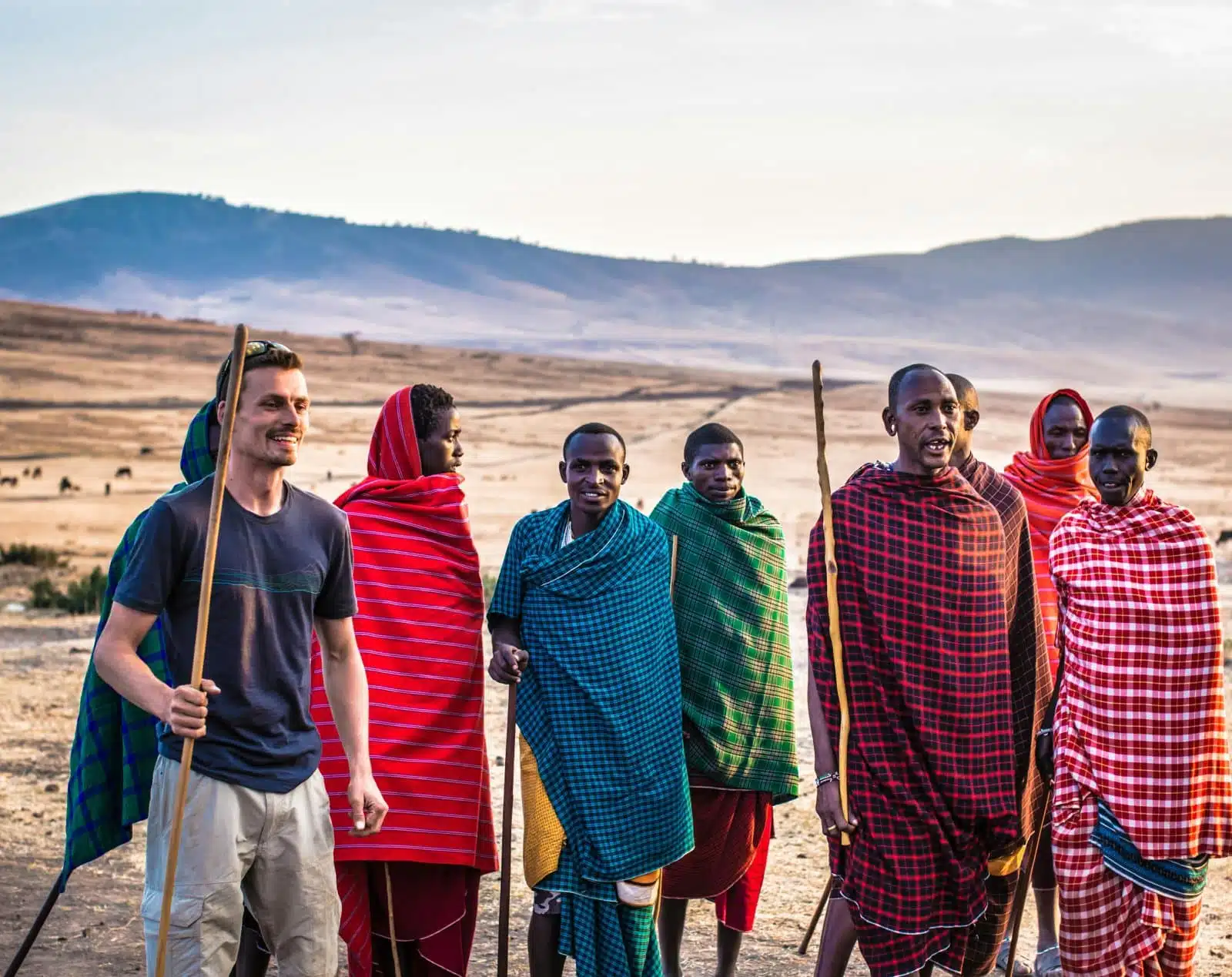
Image Credit: Pexels / Follow Alice
The Maasai people, with their rich heritage and deep connection to the land, are an integral part of the Serengeti ecosystem. Engaging with Maasai communities offers a profound cultural experience, providing insights into traditional ways of life that have coexisted with the region’s wildlife for centuries. Visitors can participate in village tours to learn about Maasai customs, from the intricate beadwork and vibrant attire to the pastoral practices that define their identity. Cultural programs might include walking safaris led by Maasai guides, who share their indigenous knowledge of the land and its animals, traditional dance performances, and storytelling sessions that convey the values and beliefs of the Maasai people. These interactions foster a deeper understanding and appreciation of Maasai culture and highlight the importance of community-led conservation efforts in preserving the Serengeti’s natural heritage.
Insider’s Tip: Choose a cultural tour that directly benefits the local community, ensuring your visit supports sustainable development and conservation education.
When to Travel: Cultural visits can be arranged year-round, offering a consistent opportunity to learn about Maasai culture regardless of the season.
How to Get There: Maasai villages are located throughout the Serengeti and Ngorongoro Conservation Area, with tours often arranged through lodges or local tour operators.
8. Seronera River Valley
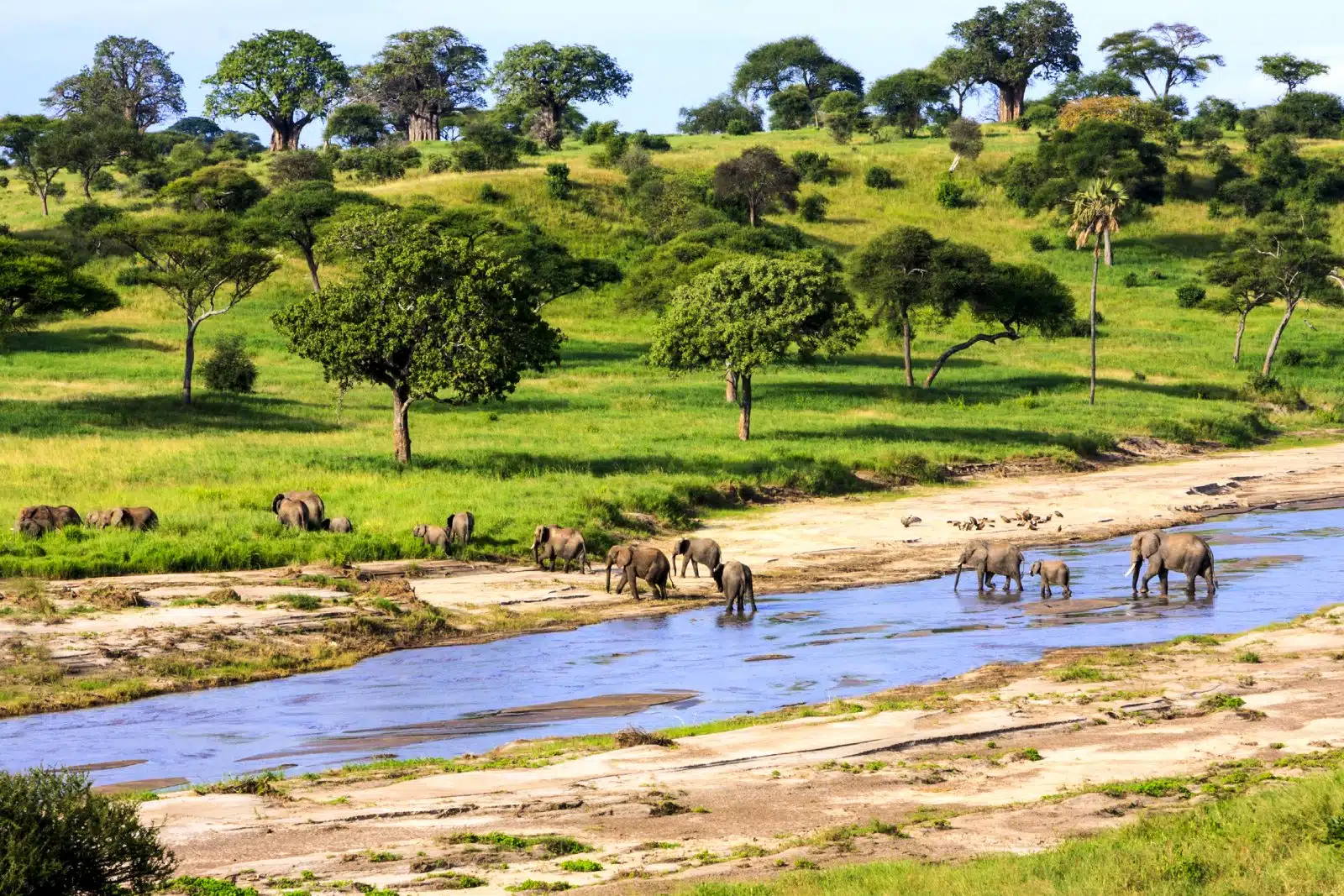
Image Credit: Shutterstock / GTS Productions
The Seronera River Valley is a wildlife enthusiast’s paradise at the heart of the Serengeti. The presence of permanent water attracts a high density of game throughout the year, making it one of the best places in the park for wildlife viewing. The Seronera area is renowned for its large population of big cats. It offers some of the best chances to witness lions, leopards, and cheetahs in their natural environment. The riverine habitat and the open plains create a diverse landscape that supports a wide array of species. Game drives in the Seronera Valley are characterized by frequent and varied animal sightings, from elegant giraffes and powerful buffalo to many bird species. The area’s central location also makes it an ideal base for exploring the wider Serengeti, ensuring that visitors can experience the full majesty of this extraordinary wilderness area.
Insider’s Tip: Embark on an early morning game drive when animals are most active and the light is ideal for photography.
When to Travel: Wildlife viewing in the Seronera River Valley is excellent throughout the year. However, the dry season offers easier wildlife spotting due to thinner vegetation.
How to Get There: The Seronera area is centrally located within the Serengeti, accessible by road and served by the Seronera Airstrip for domestic flights.
9. Grumeti River
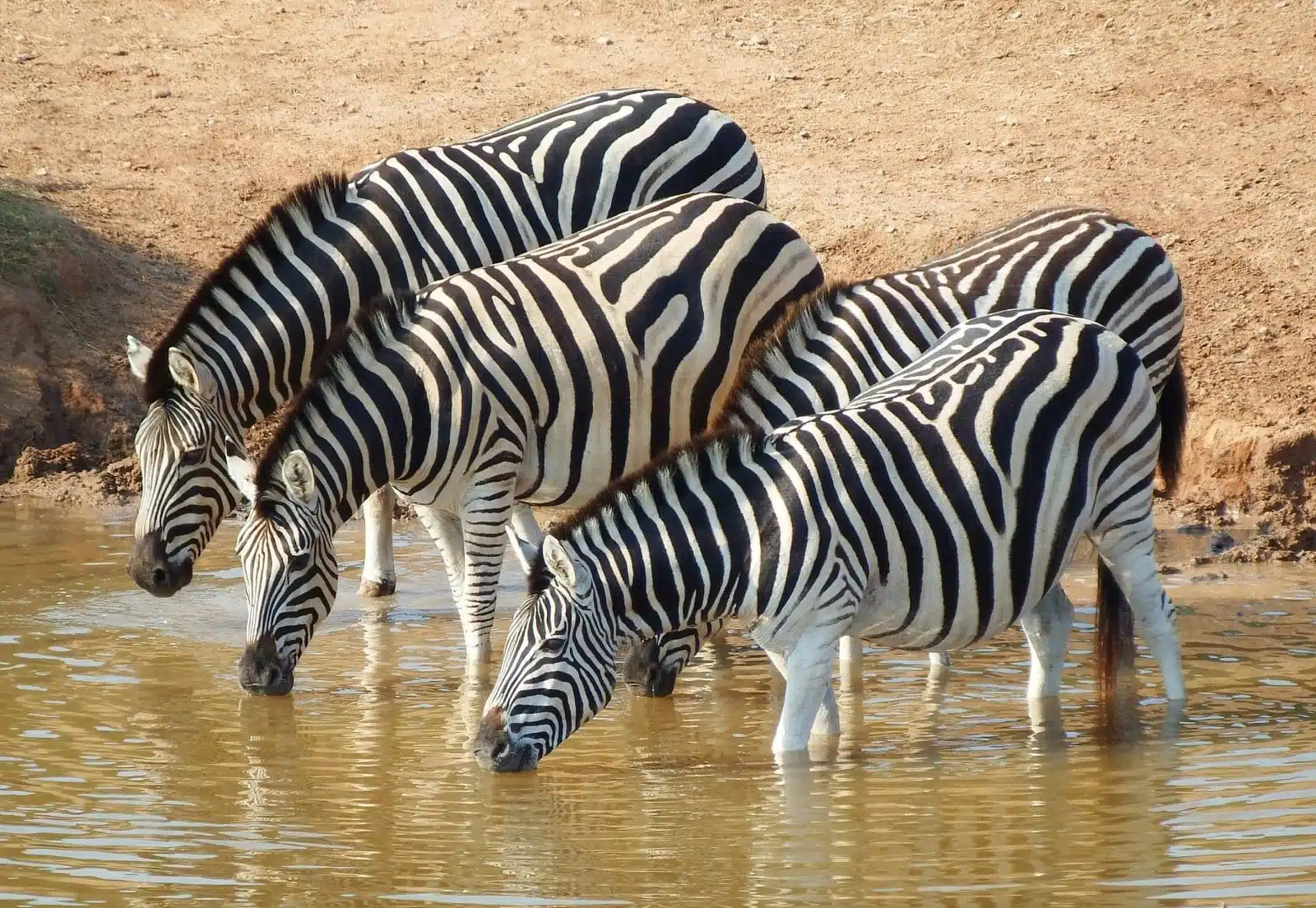
Image Credit: Pexels / Pixabay
The Grumeti River, flowing through the Serengeti’s Western Corridor, plays a pivotal role in the Great Migration, presenting one of the first major obstacles for the wildebeest and zebra herds as they move northward. The river is famed for its dramatic crossing events, where many animals must brave the crocodile-infested waters, a spectacle that draws visitors from around the world. Beyond the migration season, the Grumeti River basin is a wildlife haven, supporting resident species that thrive in the lush, riverine environment. The area is known for its large Nile crocodiles, some of the biggest in Africa, which can often be seen basking on the riverbanks. Hippos are also a common sight, with the river providing a vital refuge for these and other aquatic species. The Grumeti’s surrounding woodlands and savannahs offer a serene and richly biodiverse contrast to the more frequented areas of the Serengeti, making it a rewarding destination for those seeking both the thrill of the migration and the tranquility of the African bush.
Insider’s Tip: Stay at one of the riverside camps or lodges for an up-close experience of the migration and river crossings.
When to Travel: The migration typically reaches the Grumeti River around May or June, but the area is rich in wildlife year-round.
How to Get There: The Western Corridor is accessible by road from central Serengeti or by air via the Grumeti Airstrip.
10. Lake Ndutu
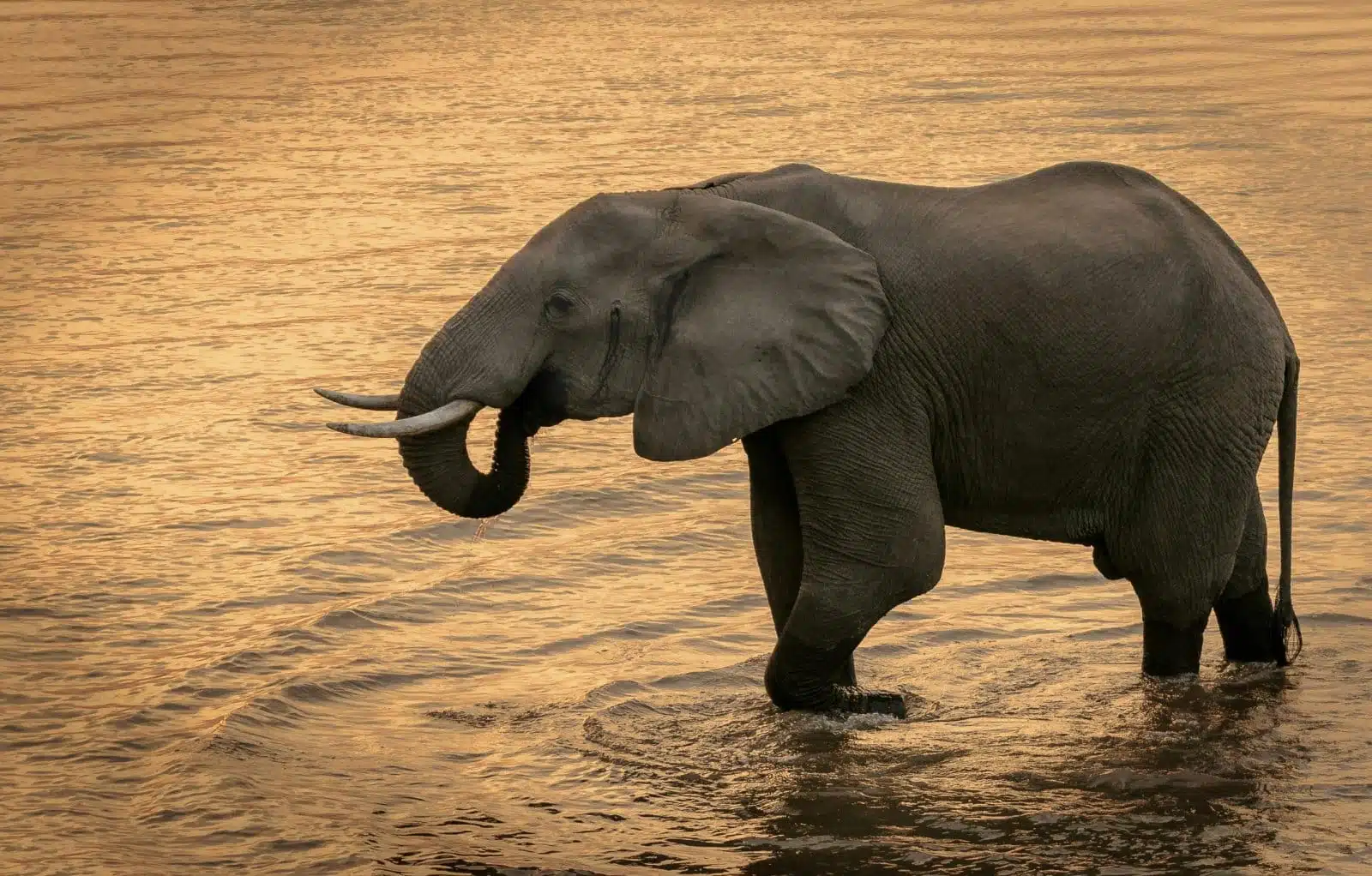
Image Credit: Pexels / Harvey Sapir
Lake Ndutu, nestled between the Ngorongoro Conservation Area and the Serengeti Plains, is a focal point of the Great Migration during the calving season. This shallow, alkaline lake and its surrounding savannahs and woodlands offer a picturesque setting for one of the migration cycle’s most tender and dramatic periods. From December to March, the area becomes a bustling nursery, with thousands of wildebeest giving birth over a few short weeks. This abundance of vulnerable newborns attracts predators, leading to intense and often dramatic interactions as the circle of life unfolds. Beyond the migration, Lake Ndutu is a year-round haven for birdwatchers, with its waters attracting flamingos and other waterbirds, adding a splash of color to the landscape. The area’s diverse habitats support a wide range of resident wildlife, making it a microcosm of the Serengeti’s ecological diversity. A visit to Lake Ndutu offers an intimate glimpse into the lives of the Serengeti’s inhabitants, set against the backdrop of one of Africa’s most iconic landscapes.
Insider’s Tip: Book accommodations early for the calving season to witness this remarkable event and the predator-prey dynamics it triggers.
When to Travel: Visit from December to March to experience the calving season, although the area’s rich birdlife and resident predators make it a worthwhile destination year-round.
How to Get There: Lake Ndutu is accessible by road from both the Serengeti and Ngorongoro, with nearby airstrips offering chartered flights.
The Bottom Line
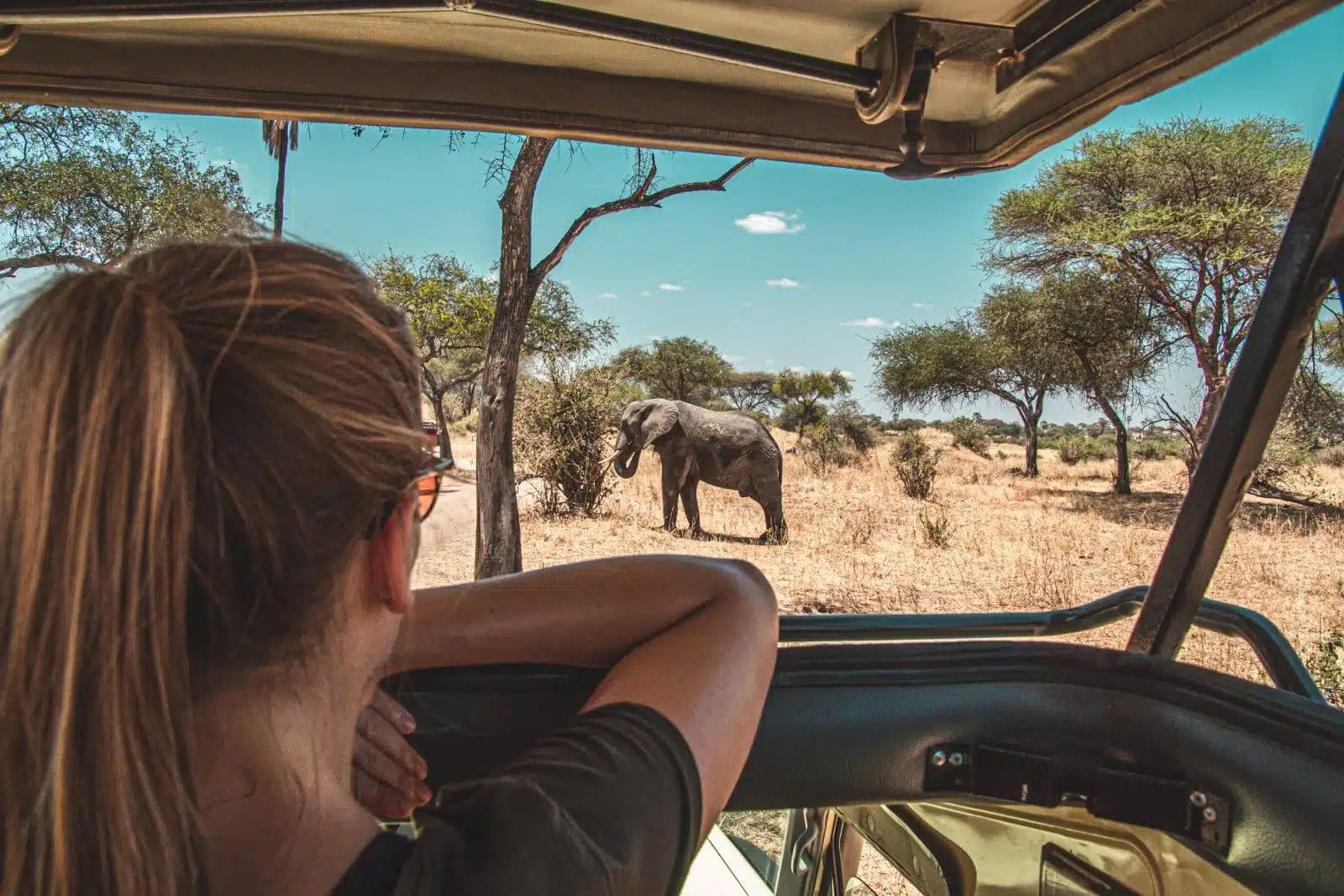
Image Credit: Shutterstock / Philipp Spatzl Fotografie
The Serengeti’s spectacular wildlife and landscapes offer an extraordinary safari experience, from witnessing the epic journey of the Great Migration to intimate encounters with Africa’s iconic predators and the rich cultural heritage of the Maasai people. Each destination within this vast ecosystem provides a unique perspective on the natural world, reminding us of the importance of conservation and our role in preserving these wild places for future generations. As you venture into the heart of the Serengeti, let the majesty of the natural world inspire you to explore, conserve, and share the stories of one of the planet’s most extraordinary wilderness areas.
More From The Green Voyage
Top 10 Trending Travel Destinations 2024
6 Essential Banking Apps for International Travel – Managing Your Finances on the Go
Traveling With Kids – 10 Tips to Create Memorable Family Holidays
The post The Spectacular Wildlife of the Serengeti 2024 first appeared on The Green Voyage.
Featured Image Credit: Shutterstock / Sergey Novikov.
For transparency, this content was partly developed with AI assistance and carefully curated by an experienced editor to be informative and ensure accuracy.
Tips for Trip Success
Book Your Flight
Find an inexpensive flight by using Kayak, a favorite of ours because it regularly returns less expensive flight options from a variety of airlines.
Book Your Hotel or Special Accommodation
We are big fans of Booking.com. We like their review system and photos. If we want to see more reviews and additional booking options, we go to Expedia.
You Need Travel Insurance!
Good travel insurance means having total peace of mind. Travel insurance protects you when your medical insurance often will not and better than what you get from your credit card. It will provide comprehensive coverage should you need medical treatment or return to the United States, compensation for trip interruption, baggage loss, and other situations.Find the Perfect Insurance Plan for Your Trip
